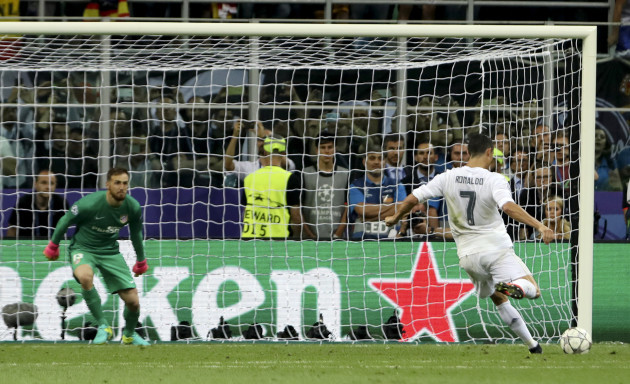FOOTBALL IS CHANGING. And it’s getting smarter.
The game is currently in the midst of a data-driven revolution that allows teams to maximise their on-field performance, help nullify the opposition’s threats and shape their transfer policies. But that is only the start.
At the heart of this new way of thinking is the world’s leading sports data provider, Opta.
Established 20 years ago, Opta now collects and packages more detailed data than any other company of its type in the world.
It’s Opta that provides key statistics to enable the media to enhance the coverage of the Premier League. Their work also extends to the other major leagues across Europe most notably La Liga, Bundesliga, Serie A and Ligue 1, and other sports such as American football and rugby union. But it is football where they have the greatest presence.
From heat maps and the number of touches Sergio Aguero had in the opposition penalty area to the distance covered by the tireless James Milner on Match of the Day or Monday Night Football, statistics are no longer for the clichéd anorak number cruncher.
It’s now mainstream and has changed the way we interpret and understand the game.
This has been helped also, in part, by the company’s hugely popular Twitter account OptaJoe, which live tweets some of the more interesting statistics from the main games of the day to its 832,000 followers.
But their application within football clubs still has a long way to go.
“Football is definitely behind the curve compared to US sports and more staccato games such as cricket. That said, most of the leading managers now have members of staff who will prepare and distil information gleaned for data into useful bits of content for the team,” says Duncan Alexander, Opta’s chief data editor, to The42.
In the past decade, the application of data and statistics in sport has been popularised by Michael Lewis’ best-selling book, Moneyball: The Art of Winning an Unfair Game.
The account, which was later adapted into a screenplay starring Brad Pitt, tells the story of Oakland A’s general manager Billy Beane, using a set of underrated statistics to find undervalued baseball players in the transfer market, which enables them to compete with teams with greater sources of revenue.
Not that it has helped the role of Opta.
“I’ve recently decided that Moneyball was the worst thing to happen as it has made people think that there’s a holy grail metric that will ‘solve’ any sport,” Alexander says.
“It’s much more likely to work as a series of small gains.”
Although there is no secret formula to success, it is now the norm for clubs to employ a team of data analysts to help their side gain a competitive edge on their rivals.
And it’s not hard to see why, even if most clubs at this stage are understandably reluctant to reveal exactly how they apply their data in order to continually outfox their opponents.
At the end of last season, Leicester City’s former assistant manager and head of recruitment Steve Walsh, who has a reputation for using stats to select transfer targets, identified Aston Villa’s Idrissa Gueye as a direct replacement for the Chelsea-bound N’Golo Kante.
Despite Villa enduring a torrid season at the foot of the Premier League table with just three wins all season, the former Chelsea scout was able to recognise Gueye’s quality in a struggling side.
The stats showed Gueye was the natural replacement for the diminutive Frenchman, with Kante the only player to complete more tackles and interceptions than the Senegalese midfielder in the Premier League last season.
However, with Walsh moving to Everton as Ronald Koeman’s Director of Football, the Merseyside club stole a march on their Premier League rivals.
The mantra buyer beware however is still as important in the modern game. In 2011, Liverpool’s then-director of football Damien Comolli reportedly spent £40 million to purchase Stewart Downing and Jordan Henderson based heavily on their high ‘final-third regain’ percentages, with mixed results for all involved, as we know.
But it is Championship side Brentford who have been at the forefront of analytics in English football ever since Matthew Benham took control of the club in 2012.
Benham, who established Smartodds, a business that helps professional gamblers predict the result of sporting events with the aid of data, has encouraged the development of a more statistical-based approach within the football club.
The childhood Brentford fan is also the majority shareholder of Danish side FC Midtjylland, the team that famously beat Manchester United in their round of 32 first leg tie in last season’s Europa League, before succumbing to a heavy defeat in the return leg.
And last week Brentford’s co-director of football Rasmus Ankersen gave an insight into the running of the football club to The Daily Telegraph, as the Bees aim to use more data to try and gain an advantage over their more wealthy rivals.
“If you don’t have the financial resources like Newcastle or Norwich or Aston Villa, you cannot peak every year.
“That’s succession planning and that’s more important at a club with fewer resources because you cannot just fix your problems by buying a new player.
“There’s not a recruitment decision based only on analytics, and there’s not a recruitment decision that is based with the absence of analytics,” Ankersen said.
The London-based side, which made the controversial decision to close their academy to concentrate their limited budget on developing their first-team squad, is not your standard football team, with Brentford aiming to develop innovative ideas to get ahead in a division of fine margins.
In recent times the club has hired, among others, a head of football philosophy as well as coaches specialising in set-pieces, throw-ins, and kicking, in the hope of bringing Premier League football to Griffin Park.
Opta, which competes with the company STATS, better known in its original incarnation as Prozone, works with more than 100 clubs worldwide, a total which includes most of the current Premier League teams. And Alexander has seen a clear change to the way the games in England’s top flight have evolved.
“The main change in the Premier League over the past decade has been a pretty significant increase in volume and quality of passing. In 2006-07 there were around 715 passes per game with a completion rate of 71%.
“Last season it was 874 and 78%. Whether passing football is ‘better’ or not is another debate but there has definitely been a shift in the way most teams are approaching matches.”
But Alexander, the author of OptaJoe’s Football Yearbook 2016, advises caution when interpreting data.
“It shines a light on stuff, it isn’t a blueprint. Leicester won the league with passing and possession figures way below the average champions so there will always be clubs who buck the trend.”
Last season however, the Foxes also showed the defensive strength of champions in the second half of the season, conceding just 0.63 goals per game compared to the 1.73 they let in during the first 19 matches, which compares more favourably to past winners.
The miserly defence added a vital 11 clean sheets during the period which helped Claudio Ranieri’s side over the line and more than made up for the lack of possession and passing accuracy.
The Leicester example, described in the book as a ‘baffling glory’, shows that looking at statistics in isolation can be meaningless but if the data is converted into a metric, the figures can offer richer insights.
And Opta continues to innovate to deliver greater in-depth analysis with some potentially interesting developments.
“For some people the ‘only stat that matters’ is goals but the truth is that a glut of goals will give a player a reputation he may not deserve, particularly in the modern game where centre forwards are expected to do so much more than just score.
“It’s why there’s such a drive to develop analytical models that quantify a player’s real contribution. To hijack the age-old question, ‘How many goals would Messi score at Stoke?’
“I’d also like to see certain physical attributes like heartrate in games. You’d be able to see which players remained calmest during penalty shootouts and who was being most affected by fatigue.
“Power data which has revolutionised cycling in the past 20 years could be coming soon as in-shoe power meters are nearly with us.”
It seems the revolution has already begun.
For more information on OptaJoe’s Football Yearbook click here.
The42 is on Snapchat! Tap the button below on your phone to add!



